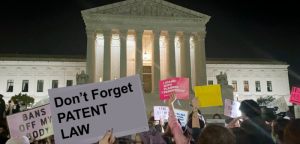by Dennis Crouch
Roku, Inc. has asked the Supreme Court to review 2024 Federal Circuit decision affirming the US International Trade Commission's (ITC) finding of a Section 337 violation based on infringement of a TV-remote patent owned by Universal Electronics, Inc. (UEI). US10593196 (method of configuring user interfaces on home theater devices to control other appliances).
The petition focuses on the ITC's "domestic industry" requirement, and the level of nexus required between substantial domestic investment, the scope of the asserted patent, and any articles that embody the patented invention. The case invites a broader reconsideration of the ITC's role in patent disputes, including its near-automatic issuance of exclusion orders against adjudged infringers.
To continue reading, become a Patently-O member. Already a member? Simply log in to access the full post.
